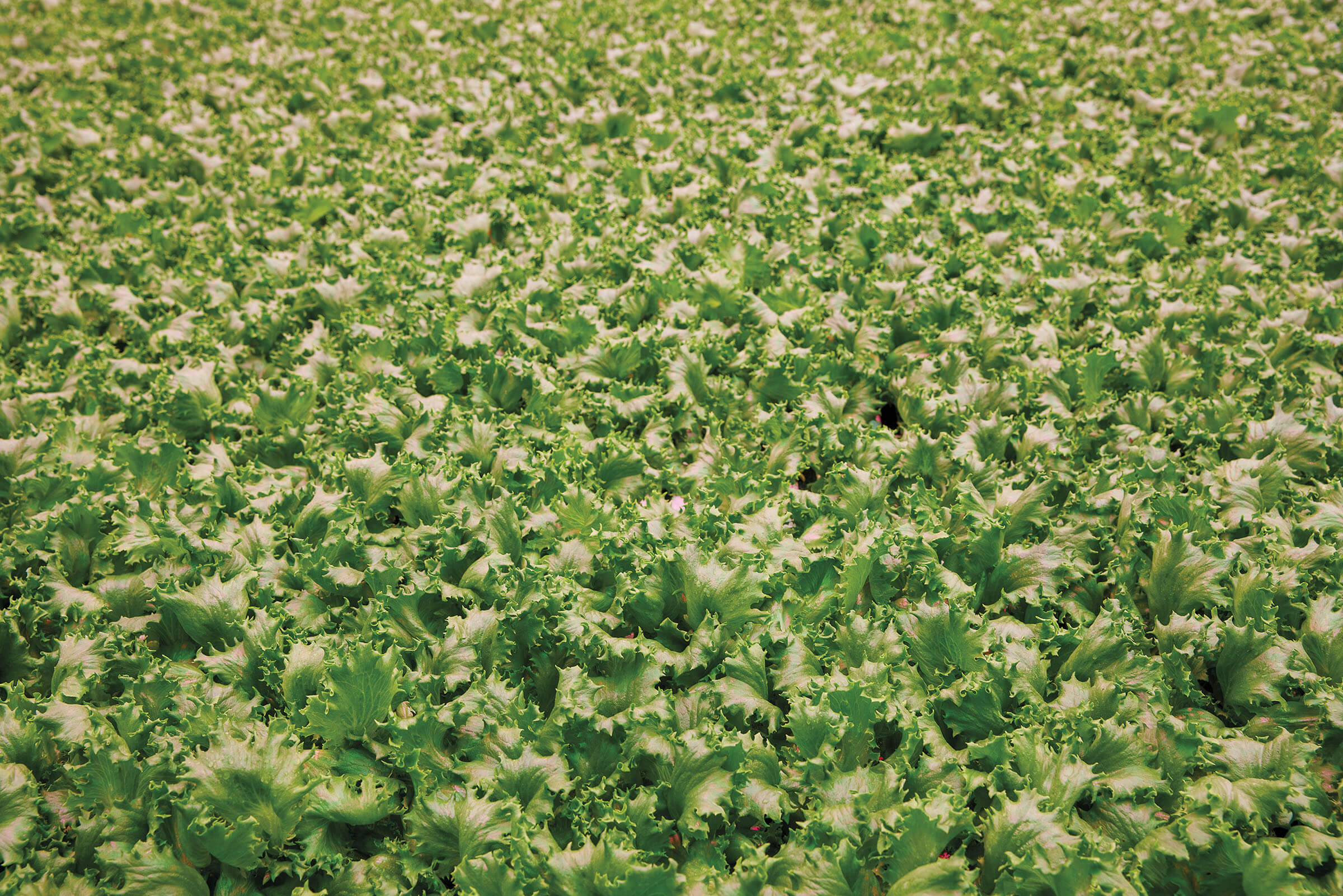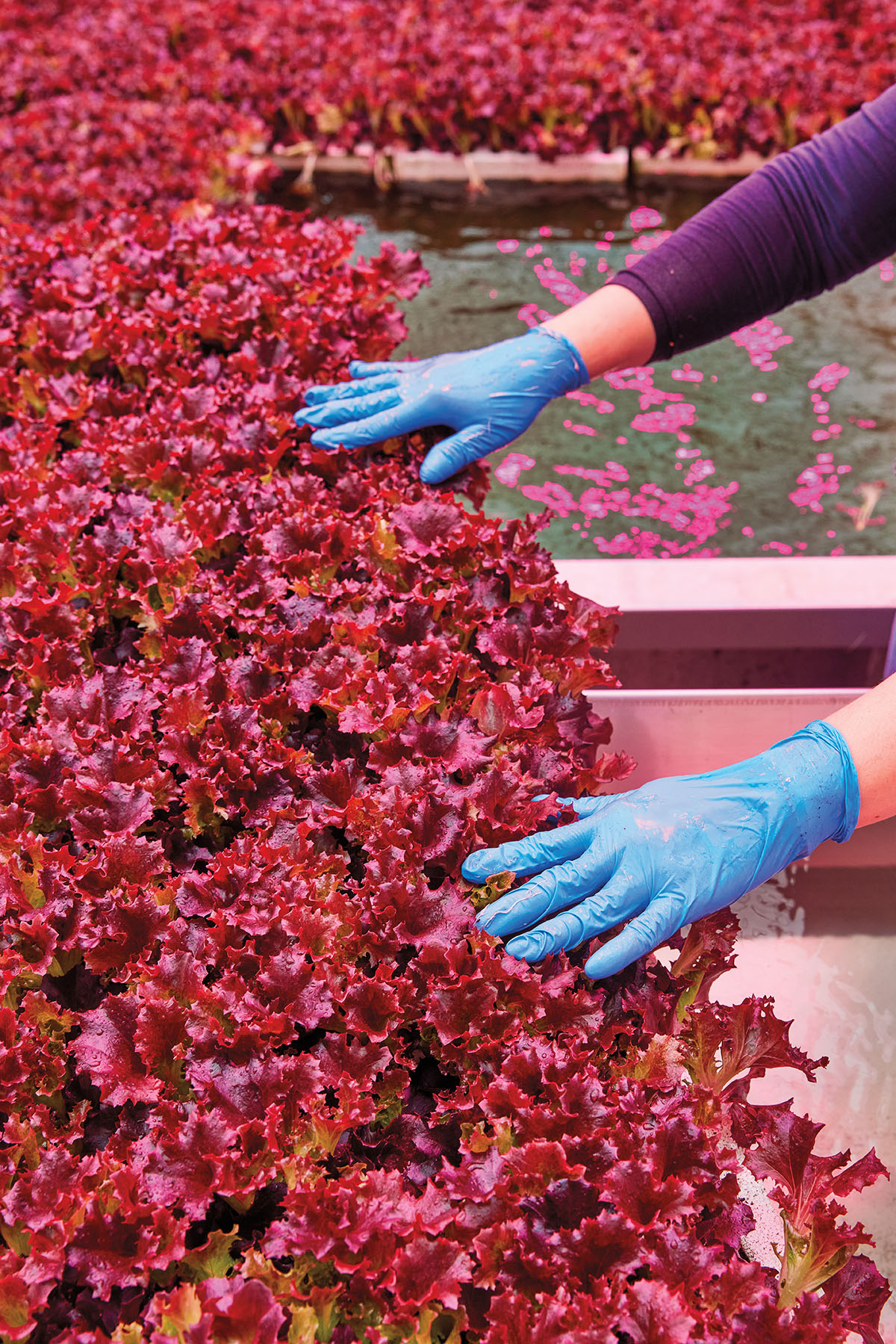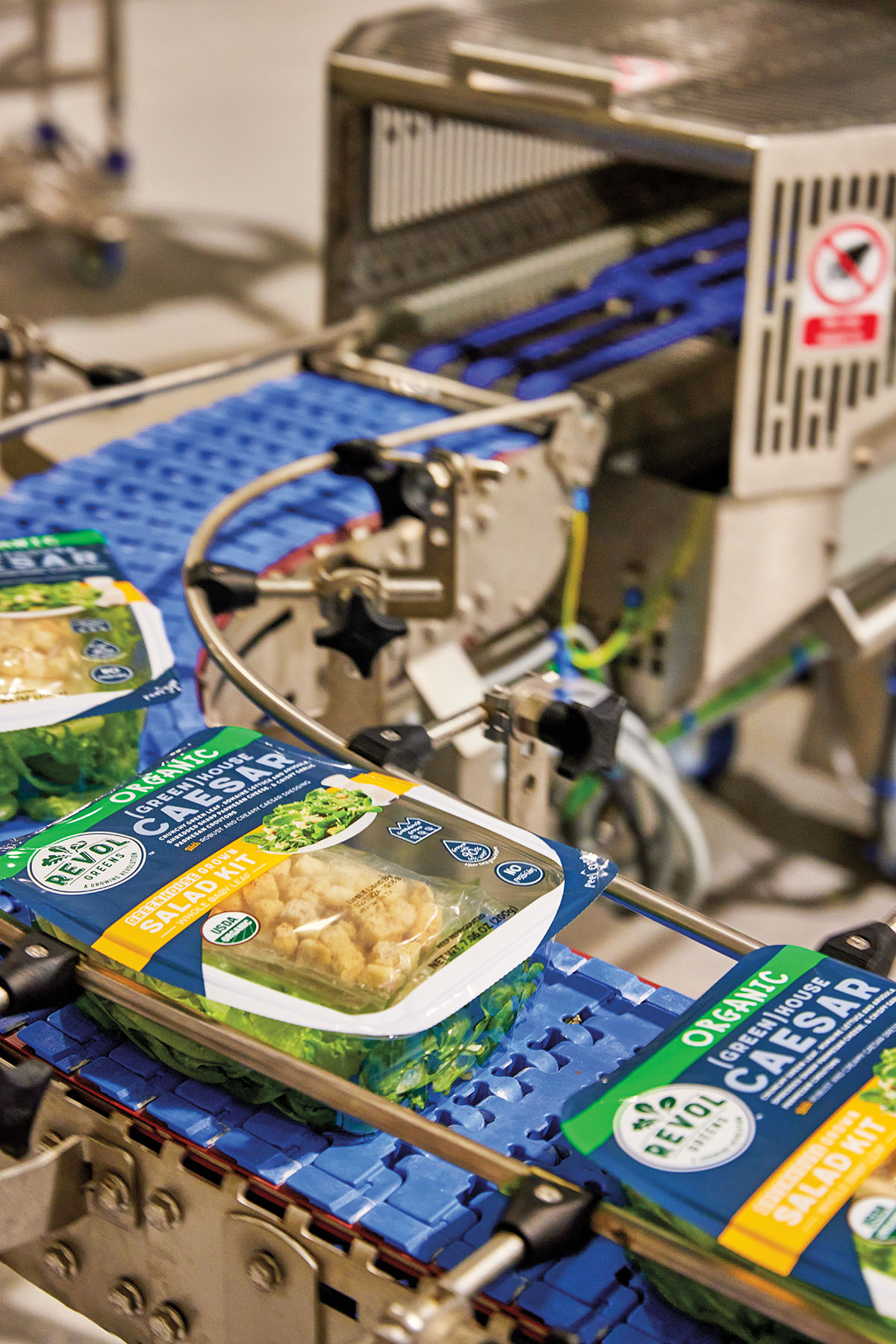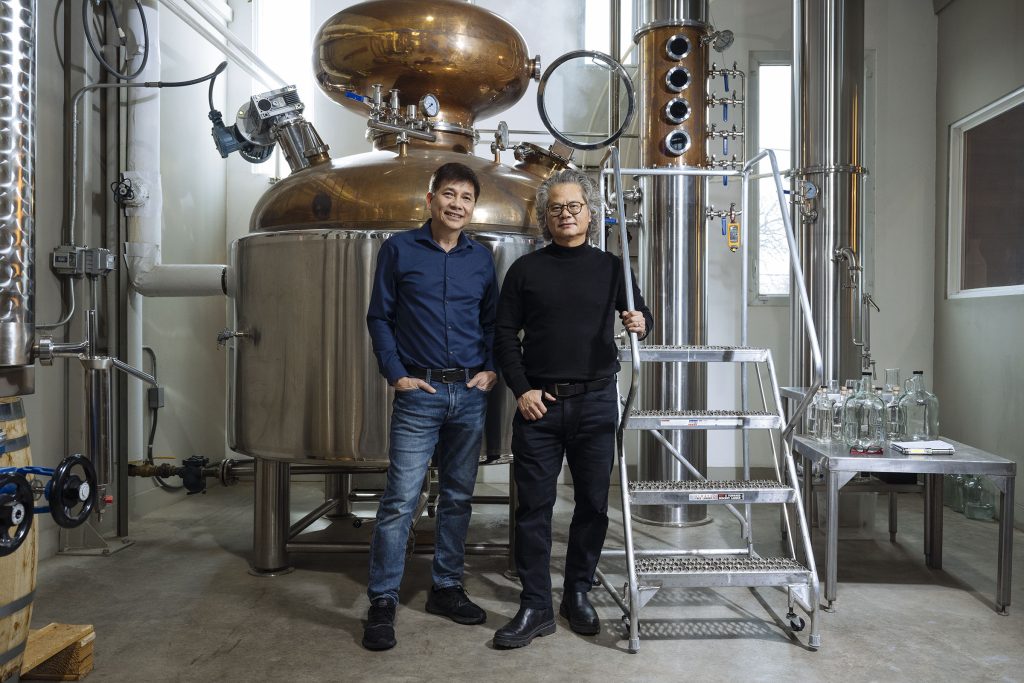
Trays of greens
Last summer, Revol Greens, the largest lettuce greenhouse grower in North America, opened a sprawling 20-acre facility in the Central Texas town that can produce as much as 24,000 pounds of lettuce a day. To put that into perspective, that is almost the equivalent of how much lettuce can grow on 1 acre of traditional farmland in an entire year.
Greenhouse farming, known as controlled environment agriculture (or CEA), isn’t new, but Revol has implemented cutting-edge technologies that reduce the risk of crop failure and food-borne illnesses in an industry that has been plagued with food safety issues. Over the past 20 years, scores of Americans have been hospitalized due to E. coli tied to lettuce production, including a 2019 outbreak that led to the hospitalization of 85 people in 27 states.

Revol’s hydroponic system efficiently produces red leaf lettuce
“It’s crazy to think that we can grow lettuce 365 days a year, no matter if it’s negative 30 degrees and there’s a foot of snow on the ground, or if it’s 105 degrees for a month straight,” Vice President of Operations John Carkoski says.
Strolling past floating trays of organic greens, Carkoski explains that more than 90% of the lettuce grown in the U.S. comes from the Salinas and Yuma regions of California and Arizona. That means highly perishable produce has to travel across the country to get to most grocery stores. Yet with four supersized greenhouses in each quadrant of the nation, Revol Greens’ products can reach consumers less than 24 hours after being harvested.

Salad kits
Launched in 2017 with a 2-acre greenhouse in Owatonna, Minnesota, the five founders of the company wanted to create a small growing operation to sell greens at area farmers markets—but the products sold so quickly they had to immediately scale up to meet demand.
After buying already established greenhouses in California and Georgia, Revol invested in a tract of land in Temple in 2022 to build its newest facility. Carkoski says there’s enough space to add another 60 acres of greenhouses, which would make it one of the largest lettuce-growing operations in the country.
Making Waves
Producing popular Texas foods takes more water than you’d think
![]()
A pound of tomatoes
26 gallons
![]()
A pound of conventionally grown lettuce
28 gallons
![]()
A pound of avocados
74 gallons
![]()
A pound of peaches
109 gallons
![]()
A pound of corn
127 gallons
![]()
16 ounces of olive oil
1,729 gallons
Illustrations: appleuzr/iStock
Today, the company’s four locations already produce more than 22 million pounds of lettuce annually. And by implementing a water tram system that moves the high-density growing boards throughout the half-mile-long greenhouse, they utilize 90% less water than conventional farming practices. That’s a game-changer in a place like Texas, where droughts have cost the state at least $1 billion since 1980, according to the National Oceanic and Atmospheric Administration.
In addition to water conservation, Revol’s hybrid hydroponic system requires less labor, fertilizer, and soil to grow. The seeds are planted by machines into a reusable Styrofoam board with just enough soil—peat moss, actually—for the roots to take hold.
But its automated Priva software can’t do it all. Of the 80 people who work at the Temple location, half a dozen are growers who also monitor the plants and growing conditions inside the building, including the plant-based fertilizer that is added to the pond water at rates much lower than you’d find in a field.
“Their main job is to know that the only constant is change,” Carkoski says. “The greenhouse is a living, breathing mechanism. It’s a controlled environment but not a closed one. We still have to work with Mother Nature.”
Carkoski would know about that kind of agrarian give-and-take. His grandfather was a farmer in Nebraska before getting into the wholesale produce industry, a field both he and his father followed. The younger Carkoski enlisted in the Marine Corps after 9/11 and then worked as a wholesale grocery buyer in Minnesota before joining Revol in 2020.
That experience has been helpful in launching the Texas location, but weather in the south has proven unpredictable in totally different ways. The first summer in Temple, when temperatures hovered above 100 degrees for two straight months, Carkoski’s team painted the roof with an organic, washable paint to block out the light to try and keep the greenhouse as cool as possible. Those efforts worked well enough for them to grow several million pounds of greens in the first few months.
Last November, the summertime paint had been washed off, the water cleaned and reused. It was a crisp sunny fall day, but inside the greenhouse, the ambiance was like it is every other day of the year: 68 degrees and humid.
It only takes about three to five weeks for the plants—including baby greens, red leaf lettuce, and romaine—to grow from seeds to tiny sprouts ready to be harvested. Within a day, those vegetables will end up at one of about 10 retailers, including Walmart, Sprouts, Costco, and H-E-B. There, customers can choose between green mixes and four kinds of salad kits that include dressing, croutons, and toppings. Last fall, Revol was experimenting with growing baby arugula and full heads of butter lettuce. But not all leafy greens have been successfully cultivated in the Revol system. Kale has been a work in progress, and don’t even get Carkoski started on finicky, cold weather-loving spinach. “Spinach is the dark horse of CEA,” he says.
As a third generation produce salesman, Carkoski has moved from the upper Midwest to the Deep South to continue this secondhand family knowledge of selling the freshest product. It’s a legacy that’s sure to reach more people than ever.
“Knowing where the industry has been growing over the past 100 years, I’ve seen the troubles we’ve had with not only food safety issues but crop failures and the stresses that come with the crazy markets,” Carkoski says. “To have a stable crop that can produce 365 days a year, that changes the way that we look at everything.”








